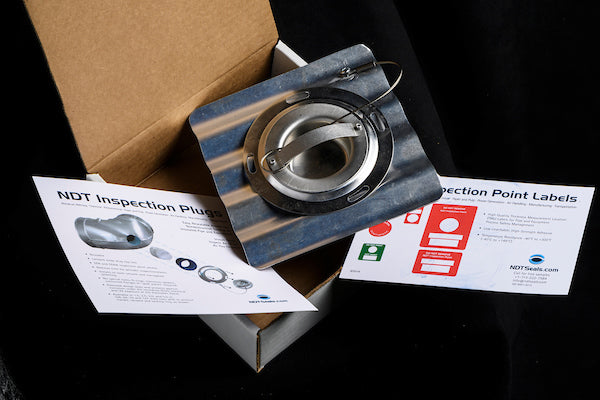In the field of industrial asset management, ultrasonic thickness testing is an invaluable non-destructive testing (NDT) method. It is widely used to assess the integrity of insulated piping and other critical assets. One key component that often gets overlooked in the process is the inspection plug. These small but crucial parts are installed in the insulation of pipelines, allowing repeated access to consistent thickness measurement locations (TML) without compromising the insulation system. The TMLs are used to calculate values such as minimum thickness, and to establish corrosion rates which are utilized in regulations and standards such as API 570. The quality of the inspection plugs can have a direct impact on the integrity of the pipeline, particularly in avoiding corrosion under insulation (CUI). In fact, the selection and installation of quality inspection plugs are critical to maintaining the health and longevity of insulated piping.
Moisture Infiltration and Corrosion Prevention One of the biggest threats to insulated piping is moisture infiltration. Water can seep into gaps around testing locations if the inspection plug is poorly sealed, leading to corrosion under insulation. CUI is a serious issue that can go undetected for long periods, causing significant damage and compromising the safety of the piping.
To prevent moisture ingress, it is crucial to use inspection plugs that offer a robust seal. The plug must be made of durable materials such as EPDM or silicone that can withstand environmental conditions, process temperatures, and maintain a watertight barrier. Poor-quality seals may crack or degrade over time, allowing moisture to penetrate. A good seal, however, acts as a first line of defense, ensuring the integrity of the insulation system and protecting the pipeline from corrosive elements.

The Role of a Metal Cap
While the seal provides protection against moisture, the metal cap plays an equally important role in safeguarding the integrity of the plug. Placing a metal cap over the EPDM or silicone seal material adds an extra layer of protection. It shields the softer sealing material from physical damage, UV exposure, and environmental wear and tear. Without the cap, the seal could be compromised, which would defeat its purpose of preventing moisture ingress.
A well-designed metal cap also ensures that the plug stays securely in place and maintains consistent pressure on the sealing material, further enhancing the protection against water intrusion. This additional protection extends the life of the plug and reduces the risk of needing frequent replacements, which can be costly and time-consuming.
The Importance of a Lanyard
Another essential feature of a high-quality inspection plug is a lanyard that attaches the metal cap to the plug location. This small addition can have a significant impact on the performance and longevity of the inspection plug. Without a lanyard, the cap could be easily misplaced or dropped during inspection activities, exposing the seal to the elements and creating an opening for moisture infiltration.
By ensuring that the cap remains tethered to the plug location, a lanyard not only helps maintain the plug’s integrity but also makes the inspection process more efficient. Operators won’t need to search for or replace lost caps, reducing downtime and ensuring consistent protection for the underlying piping.
Maintaining Integrity and Ensuring Accurate Readings
When all these components—seal, metal cap, and lanyard—are working together, the integrity of the insulated piping system is better protected. This is particularly important for obtaining accurate readings during ultrasonic thickness testing and for ongoing fitness-for-service assessments. Any moisture infiltration or degradation of the plug could skew the readings, leading to faulty assessments and potentially unsafe recommendations. By using quality inspection plugs, companies can trust that their testing locations remain secure, minimizing the risk of inaccuracies in thickness measurements and helping to ensure the safety of the entire piping system.
NDT Seals: Delivering Quality and Value
At NDT Seals, we understand the importance of high-quality inspection plugs in maintaining the health of industrial assets. That’s why we provide industry-leading products designed to protect against moisture infiltration and corrosion under insulation. Our inspection plugs feature durable seals, protective metal caps, and lanyards to ensure that each component stays intact and continues to deliver reliable protection. And, with some of the most competitive prices in the industry, we are committed to helping companies achieve better asset management while reducing overall costs.
Investing in the right inspection plugs is a small step that can have a big impact on the safety and longevity of your insulated piping. Don’t just plug it, seal it. NDT Seals.
Visit our e-shop for quick and easy ordering of our plugs and labels at ndtseals.com.


